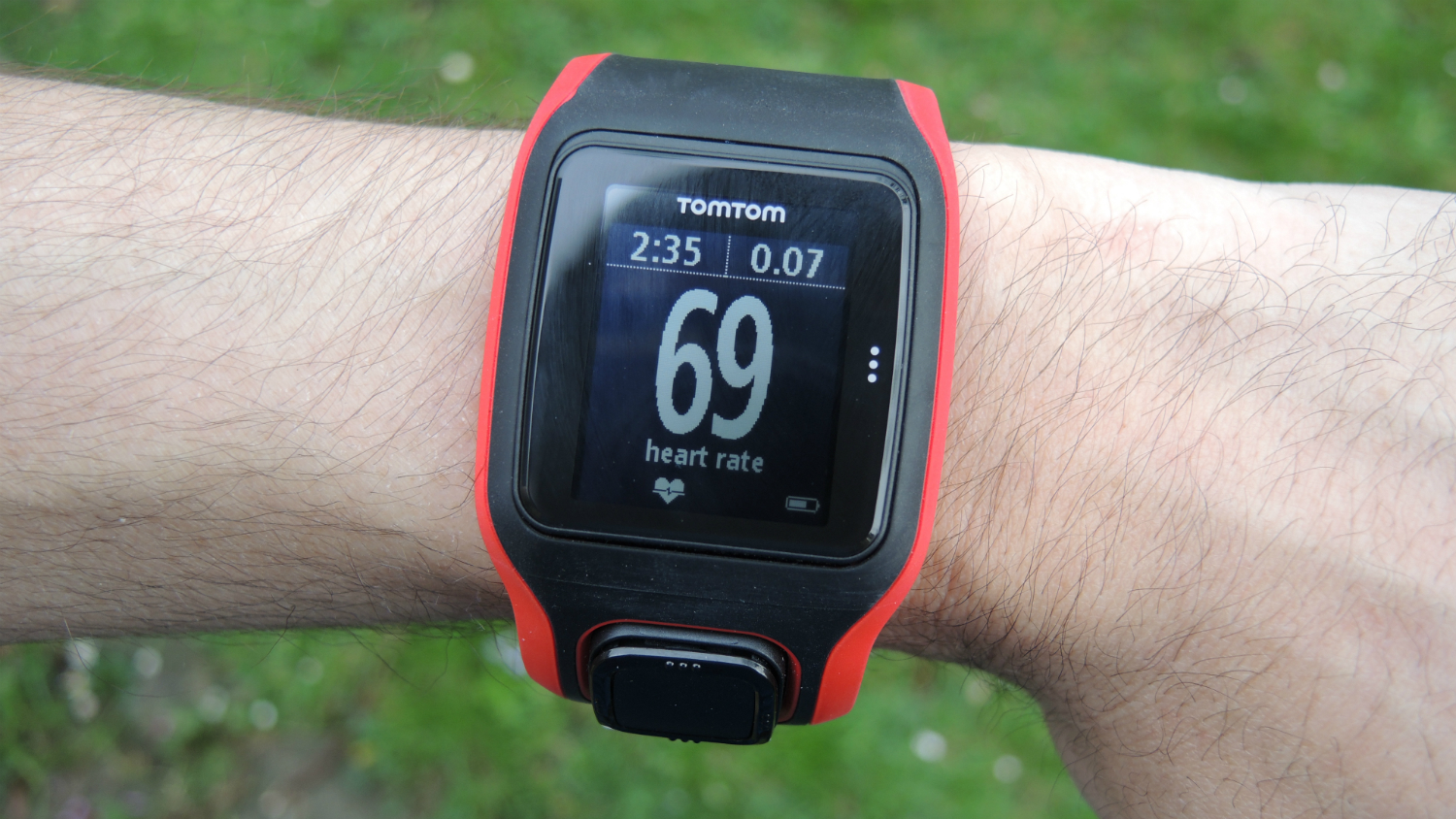Why you can trust TechRadar
What's it like as a running watch?
The broad band hitches on easily with the unusual triple-buckle, then a quick tap right on the odd but surprisingly usable joypad takes you into sport selection mode.

There's Run and Treadmill (outdoor and indoor), the former if selected brings up the GPS lock screen, the latter, freed from the GPS chip, gives you an instant 'go'.
While you're waiting on the GPS you've got plenty of time to head over (down) into training, where you've got the chance to race your previous PBs, chase down new goals saved via the desktop, run laps/intervals or train to HR zones.
It's a good spread of training options, and relatively easy to navigate, select and create. TomTom has done well here. However, at times the Multi-Sport Cardio can take several minutes to get going. It's frustrating, because on other occasions, in the same place, it takes just seconds.
You can turn on assisted GPS via TomTom's mobile app (it syncs with the wearable via Bluetooth) but otherwise you're in for a wait. The other issue, which is not unique to this by any means, is that it struggles to track your elevation. So if you're taking on mighty hills, it thinks you've climbed a molehill, and conversely, it'll sometimes think a perfectly flat road is Mount Etna.
There is a version of this with an altimeter but that pushes the price to £329. Testing this device against newer watches really showed this up - GPS lock often took the TomTom 3-4 minutes longer than other running watches from Garmin and Suunto.

The UI still hasn't been updated to allow a 'skip' function, so you can get moving to stay warm. Once you've cleared that hurdle though, the TomTom is actually a very good running watch - the screen is nice and clear, the weird joypad actually quite easy to operate (at least till winter gloves are needed), and tabbing between the screens of handy data such as split times, HR, distance, time, time to goal, etc on the move is intuitive and easy.
Sign up for breaking news, reviews, opinion, top tech deals, and more.
Heart Rate Tracking
But enough on the cosmetics - how good is that heart rate monitor? First thing, in order to get the monitor working you need to make sure the watch is strapped snugly above the wrist bone.
This ensures it will get a clear reading of your pulse, which it does through two green LEDs on the back that calculate your heart rate by detecting changes in blood flow. It's pretty cool stuff.
You'll want to make sure the watch is tight enough to prevent it moving about on your workout. Luckily the watch fits comfortably around the arm so that shouldn't be much of an issue, but letting it slip down will mean a loss of accuracy.
I found that it didn't take long for the watch to find and display my heart rate, and it was easy to monitor the all-important "zone" I was in when running or pumpin' iron - a "treadmill" setting lets you use the watch without GPS, in the gym or home.

On my test run I strapped last year's TomTom Runner onto my other wrist and strapped a heart rate monitor to my chest so I could compare the results. As it turned out, the readings were consistently close and often identical (the Cardio watch tended to be a couple of seconds behind in bpm adjustments, which I would have expected anyway).
But that wasn't enough assurance for me, so I also tested the Multi-Sport Cardio's heart rate monitor against a hospital ECG machine. Once again, the results were impressively in sync.
The new monitor also means you can train in your optimal heart rate zone - easy, fat burn, endure, speed and sprint - and the watch will alert you if you need to speed up or slow down. Zones are calculated based on your age and are not user definable but if you're not an elite athlete, that's probably not an issue.
That's if you use USB - Bluetooth syncing between the watch and its mobile app is also possible and this means your heart rate data will also now be transferred over quickly with the rest of your workout stats.
Current page: Fitness Tracking
Prev Page Introduction, Screen, Battery and Design Next Page App, Additional Features and Verdict
Mark Mayne has been covering tech, gadgets and outdoor innovation for longer than he can remember. A keen climber, mountaineer and scuba diver, he is also a dedicated weather enthusiast and flapjack consumption expert.
